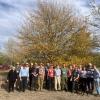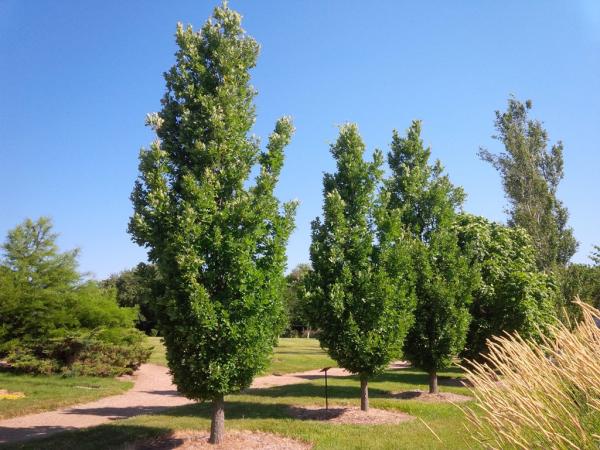Editor's Picks
Plant Focus
The latest issue of Oak News & Notes, the IOS newsletter, included articles on oak declines in the Zagros Mountains of Iran and in Britain. A characteristic feature of both decline syndromes is that there is no single causative agent: climatic factors, soil conditions, fire, insect attacks, pathogens, and cultural practices are among those that, acting together, can lead to the chronic or acute declines in the health of oaks. A recent paper in Trees, Forests and People (Volume 19, March 2025) considers, by means of an extensive literature review, similar decline of oaks in Mediterranean-type climate regions. Its lead author is IOS member Marco Neves Marques of the Centre for Applied Ecology “Prof. Baeta Neves” (CEABN-InBIO), School of Agriculture, University of Lisbon, Portugal. The paper summarizes the research carried out by Marco and his colleagues, as presented at the International Oak Symposium hosted by the University of Tennessee Institute of Agriculture in October 2024.

There are five regions in the world with Mediterranean-type climates (MTC): California and north-western Mexico; the Mediterranean Basin; the Pacific seaboard of Chile and the extreme west of Argentina; the southwest coast of South Africa; and parts of the southwestern and southern seaboards of Australia. Of these, the only two with native oak species are California/Mexico and the Mediterranean Basin. These MTC regions are characterized by hot dry summers, mild moist winters, and summer droughts. Until the work carried out by Marco and his colleagues there had been no systematic analysis of the causes of oak decline in these two regions. To address this, the research group reviewed 241 peer-reviewed papers up to 2022.

It was found that the first articles about oak decline in these two regions appeared in 1981. Most studies were related to the Mediterranean Basin, with the most frequently studied species being cork oak, Quercus suber, and Holm oak, Q. ilex. In those relating to California the most frequent species were coast live oak, Q. agrifolia, and California black oak, Q. kelloggii. Pathogens and climate factors were the two most-studied contributors to oak decline, but, as with the Iranian and British experience, multiple interactions between factors were identified (see: https://www.sciencedirect.com/science/article/pii/S2666719325000317?via%3Dihub#fig0006 for more detail).
The authors conclude that their study “highlights the potential risk of pathogen and pest transference between MTC regions and the critical role of management practices in influencing oak decline in interaction with biotic and abiotic factors.”
The paper, which contributes significantly to our growing awareness of oak decline around the world, can be accessed here.
Publication
Marques, M., M.N. Bugalho, V. Acácio, and F. X. Catry. 2025. Disentangling research on oak decline factors in Mediterranean-type climate regions: A systematic review,
Trees, Forests and People 19: 100803, https://doi.org/10.1016/j.tfp.2025.100803.















